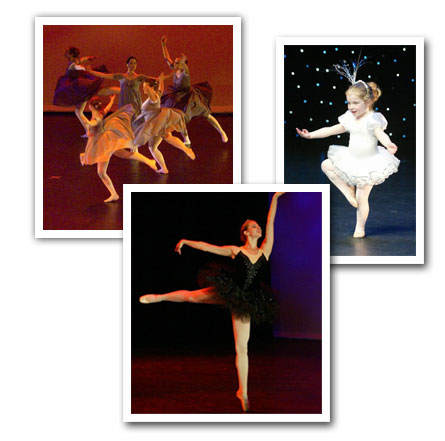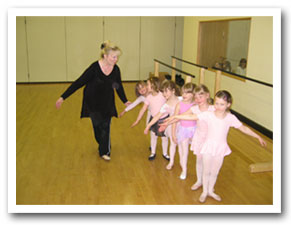
Send us an email! Monday through Thursday 3pm to 9pm • Saturday 9am to 5pm
|
CLASSES
TAUGHT FROM THE HEART IN A NON-COMPETITIVE DANCE ENVIRONMENT
WHY HEARTBEAT IS A NON-COMPETITIVE DANCE
STUDIO Heartbeat recently hosted a master tap class with NYC-based and internationally renowned tap dancer, composer, singer and actor, Max Pollak. During a conversation Max shared with me his dislike of dance competitions and lamented, “When is someone finally going to say ‘no’ to dance competitions?” He further explained that the dance competition industry is making a few “non-dancers” millionaires and that competitions were originally started by an enterprising fellow who had never danced before but saw that a lot of money could be made from dancers and their parents who were willing to spend thousands of dollars each year to satisfy their own need to compete and that for some it was easier to wrap their mind around dance as a sport rather than an art form. Speaking on behalf of others in the professional dance community, Max ended our conversation by saying that, “If this is what dance has come to in America, then we are in a sad state.” Even though dance competition studios are popping up all over, I will forever hold true to Heartbeat’s mission of supporting and advocating dance as an art form and one of life’s most beautiful and powerful ways to communicate. Years ago I was asked to be a judge at the first dance competition held in Minneapolis and was horrified at what I saw and ended up walking off the job. The music, costumes and choreography for the elementary-aged dancers were shamefully age inappropriate. The written material I was given as a guide to judge the dancers only focused on conformity of costumes, make-up, hair and a few “trick” moves. There was nothing in regard to the technical skill of the dancers or the passion and creativity of the choreography. Dancers paid a high fee to participate in the competition and if they won, they still had to buy the trophy. It upset me terribly to see parents pay a lot of money and then clap and cheer while their children were being asked to dance in a suggestive manner way beyond their delicate years. I recently watched a few local high school dance competitions and was saddened at the sameness of the choreography. The dances were almost identical! I kept thinking, “Where did the art and creativity go?” The art of dance is meant to communicate a passion called “life”. All that I observed at the competition was repetition of the same “dance trick” choreography formula. Think of dance as the personification of music. What if we were only able to hear the same song over and over again? How would that further advance the art of music? Students in dance competition schools will rehearse the entire year to perfect a few leaps or turns to impress judges while ignoring the remaining 99% of what the art of dance consists of. Every year Heartbeat has new students enroll who have left a competitive studio. Often the parents of those students soon realize the catching up in dance technique needed for their child and will say, “I feel like I threw away the money I paid to the other studio.” I would like to share with you some very poignant excerpts from articles I recently read that relate to dance competitions and the importance of dance training in a child’s life.
”Is Dance Competition a Good Thing?” “Dance is an art form that uses the body…it is not a sport; dance is about personal expression. Every person has something unique to say. How can you put a point value on that? The same dance affects each of us differently. Which one we enjoy most is a matter of opinion and putting a score on a dance tells us that one opinion is more valuable. This is not the case. The ‘goal’ of dance is the message or feeling the choreographer is trying to express. Putting a trophy or defeated competitor at the end of the journey changes the focus – to winning and competition. Instead of joy, pain or passion being central to the dance they become tools that help the choreographer [competition studio] win” “Does This Really Happen?” “You bet it does. Teachers [competition studio] create dances that will satisfy the judges’ opinions. Instead of trusting their own artistic inspirations, they make dances they think will win. Parents will not continue to pay for ‘losing dances’. This is one of the reasons so many competition dances are identical. Pressure to win forces one to conform.” “Can’t You Tell Who the Better Dancer is by the Number of Turns, Height of the Jumps, and Amount of Flexibility They Have?” “No you can’t. Those elements are like having big words in your vocabulary. The purpose of speech and dance is to express oneself. We have all heard the know-it-all who used big words all the time. We get irritated when they ‘show-off’ their big vocabulary. Dance is no different.” “Doesn’t Competition Prepare Dancers for the Real Dance World?” “No. In the ’real’ world, you learn a 90-minute show in 3 weeks. In competitions, you spend a year rehearsing a 3-minute dance. Competition exists in any career. Nonetheless, artificially created competition is unnecessary. It forces dancers to focus on the opposition rather than themselves.” In a humorous moment, Mr. Robey added, “If dance becomes a sport, can you imagine running the 100 meter tap flap? How about the 12 mile ballet bourree marathon? Maybe the jazz switch leap high jump would be fun to watch!” Dance should focus on proper technique and the growth of the student, not on competitions. The dance competition circuit fosters negative competitiveness among studios and ultimately among dancers within the same studio.
“Anyone who doubts that children are born with a healthy amount of ambition need spend only a few minutes with a baby eagerly learning to walk or a headstrong toddler starting to talk. No matter how many times the little ones stumble in their initial efforts, most keep on trying, determined to master their amazing new skill. It is only several years later, around the start of middle or junior high school, many psychologists and teachers will agree, that a good number of kids seem to lose their natural drive to succeed and end up joining the ranks of under-achievers”… “A growing number of educators and psychologists do believe it is possible to unearth ambition in students who don’t seem to have much. They say that by instilling confidence, encouraging some risk taking, being accepting of failure and expanding the areas in which children may be successful, both parents and teachers can reignite that innate desire to achieve”… “Some experts say our educational system, with its strong emphasis on testing and rigid separation of students into different levels of ability, also bears blame for the disappearance of drive in some kids…these programs shut down the motivation…they destroy confidence”… “Jeff Howard, a social psychologist and president of the Efficacy Institute (Boston) and other educators say it’s important to expose kids to a world beyond homework and tests, through volunteer work, sports, hobbies and other extracurricular activities.” One of the benefits of dance training is self-confidence building. Every time a student attempts a new dance step or movement they are taking a risk and learn tenacity and drive to keep trying until they get it right. Every week Heartbeat students experience “little successes” while they learn about dance and about themselves. Whether dance is a hobby, extracurricular activity, exercise or future profession; many studies have shown that involvement in the arts helps students do better in school. We want to thank parents at Heartbeat who understand that through dance training, they are expanding the areas in which their child can succeed and that Heartbeat, by remaining a non-competitive studio, is supporting and nurturing each child’s growth in this beautiful and powerful art form that enhances their lives.
|

